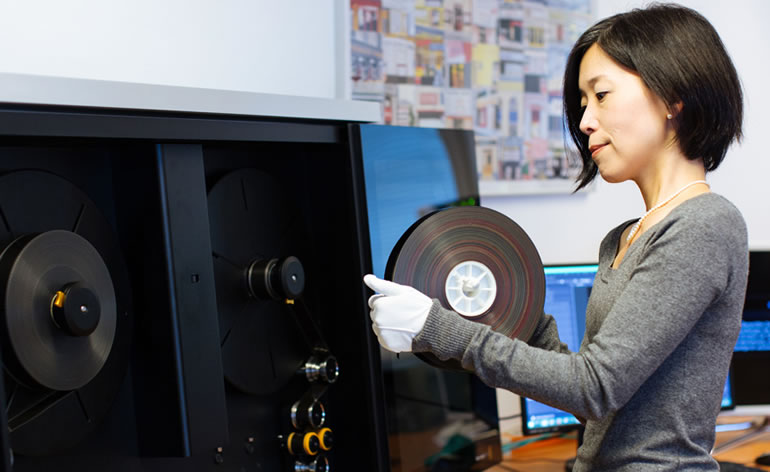Blackmagic Design has announced that the Austrian Film Archive, located in Vienna, has expanded its abilities to scan high resolution 4K masters and digital ready cinema packages with the installation of a Blackmagic Cintel Film Scanner.
Responsible for curating film collections and film documentations, the institute is home to the largest collection of audiovisual cultural heritage in the country. Its primary objective is to make those comprehensive collections available to the general public using a variety of different presentation methods. Contained within those collections are more than 200,000 film prints and 48,000 film programs spanning the past 120 years.
With an ever increasing demand for high resolution masters Fumiko Tsuneishi, heads up the Austrian Film Archives technical department, approached Vision2See about integrating Blackmagic’s Cintel Film Scanner into the institute’s existing Windows based environment.
Until now, the Austrian Film Archive had been limited to scanning archived 35mm films mostly in SD (DigiBeta) only. “Bar a small number of restorations, we had yet to begin the process of scanning digital HD copies of our 35mm film archives,” suggests Tsuneishi. “Blackmagic’s reimagining of Cintel means we can bypass HD altogether and scan in UltraHD 4K.”
The institutes existing workflows are Windows based and features access to high-speed storage RAID with fiber-channel connectivity. Vision2See specified a SuperMicro Server in order to capture the RAW log files in realtime via Thunderbolt 2 and store them on the institutes network.
Those scans are then accessed from any one of three DaVinci Resolve equipped workstations. Files are converted from the native 12-bit linear Cintel Raw Image (CRI) to DPX and processed through DIAMANT-Film Restoration software before they are edited and graded in DaVinci Resolve. The finished remastered content is then delivered as a QuickTime master and as a digital cinema package (DCP) using DaVinci Resolve’s easyDCP plug-in.
Fumiko and her team are currently using Cintel on a very intensive restoration project set for DVD release in September called K. -u. -K. Filmuniversum. “This is a compilation of the most frequently asked for materials from the time of Austro-Hungarian monarchy,” concludes Tsuneishi. “The scanned material is also set to feature in a planned exhibition at the Metro Kinokulturhaus in Vienna.”
“What strikes me about Blackmagic’s Cintel scanner is its ease of operation. It’s so simple and easy to operate that almost anyone can learn to use it. It also has good dynamic range, which means we don’t have to monitor a histogram in realtime. That represents a big cost saving for us, by not having to leave someone in front of the scanner for the whole process. It’s handled everything we intended it to and more, including nitrate film from 1910.”
Resources: www.blackmagicdesign.com




